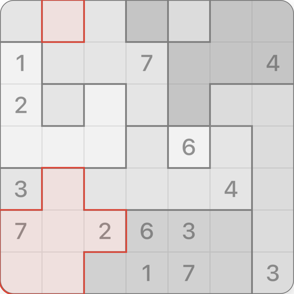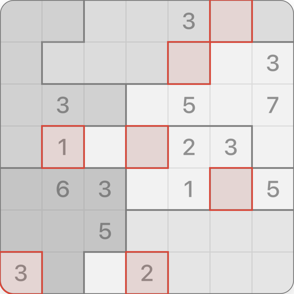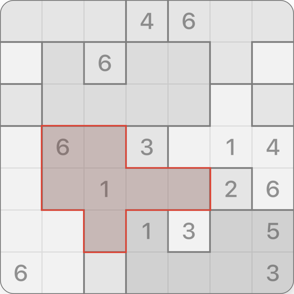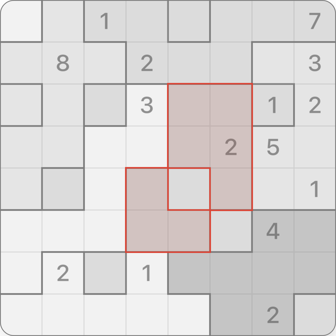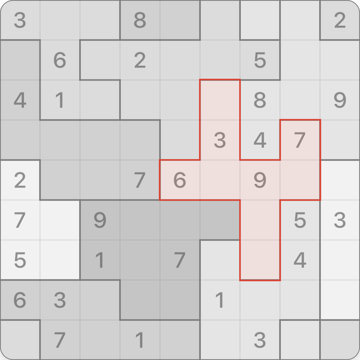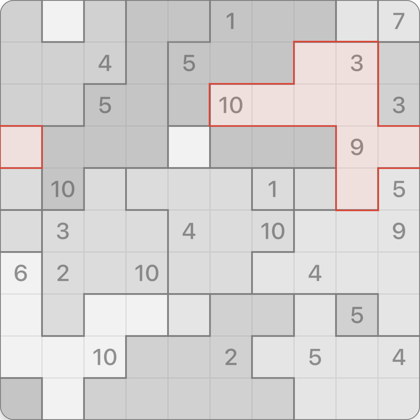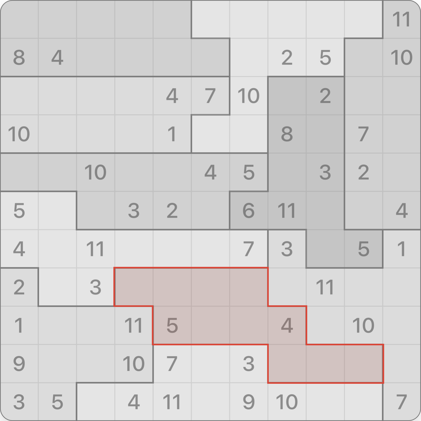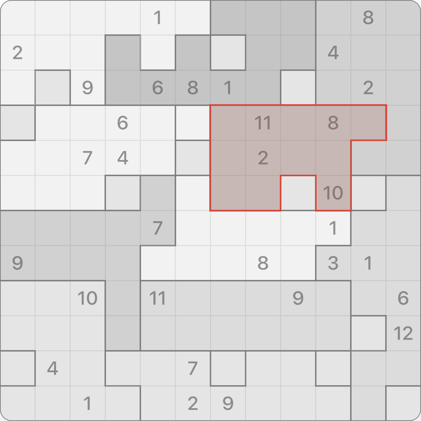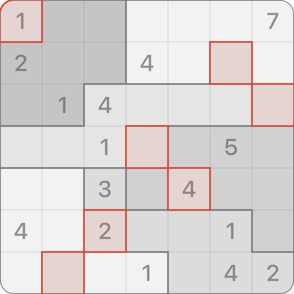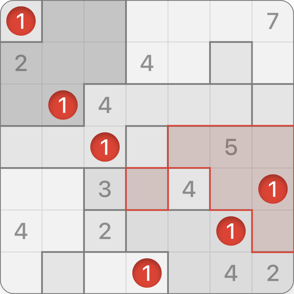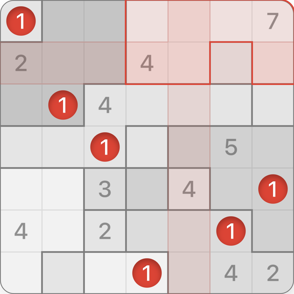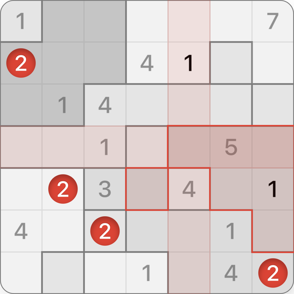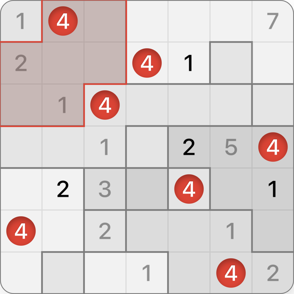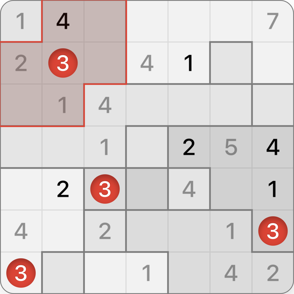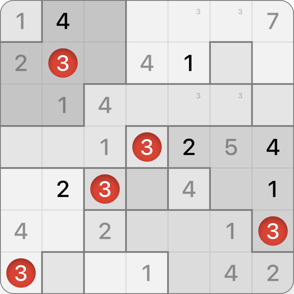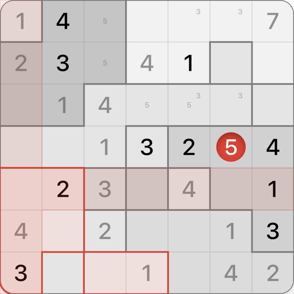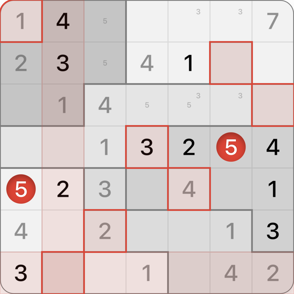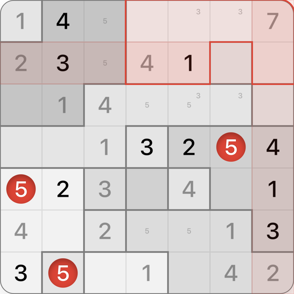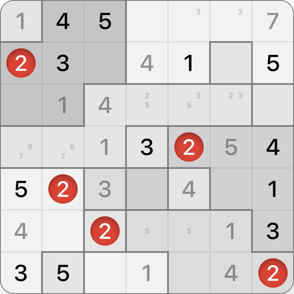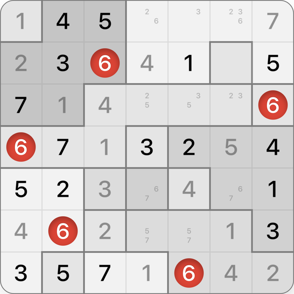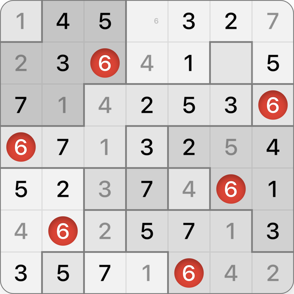Boxes
The main difference between a Chaos Sudoku and a classic Sudoku are the boxes. In the figure, one box is highlighted at a time.One Sudoku all boxes have an individual random shape. Additionally, depending on the difficulty level, the boxes may have been moved one or more steps. This will cause them to be torn apart, or they may even be continued on the opposite side of the board. Another type of box is randomly distributed on the board when the Sudoku is created. Thus it is possible that this box has no adjacent cells at all.
Nevertheless, it is still true for all these boxes that each number in them may occur only once.
Boxes
The main difference between a Chaos Sudoku and a classic Sudoku are the boxes. In the figure, one box is highlighted at a time.One Sudoku all boxes have an individual random shape. Additionally, depending on the difficulty level, the boxes may have been moved one or more steps. This will cause them to be torn apart, or they may even be continued on the opposite side of the board. Another type of box is randomly distributed on the board when the Sudoku is created. Thus it is possible that this box has no adjacent cells at all.
Nevertheless, it is still true for all these boxes that each number in them may occur only once.


